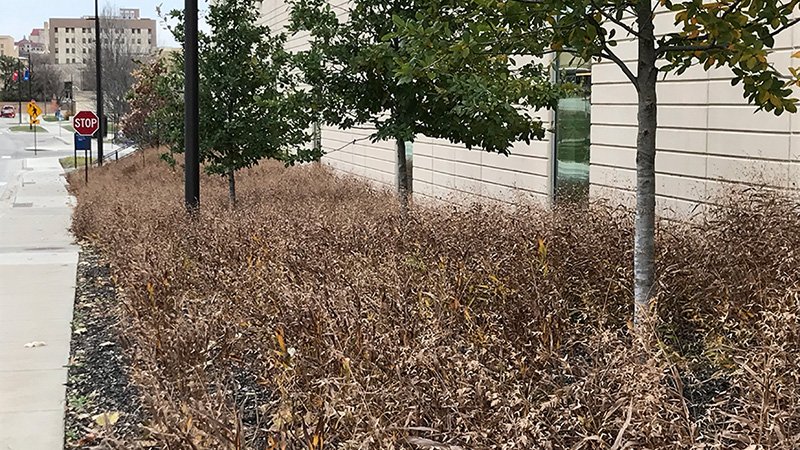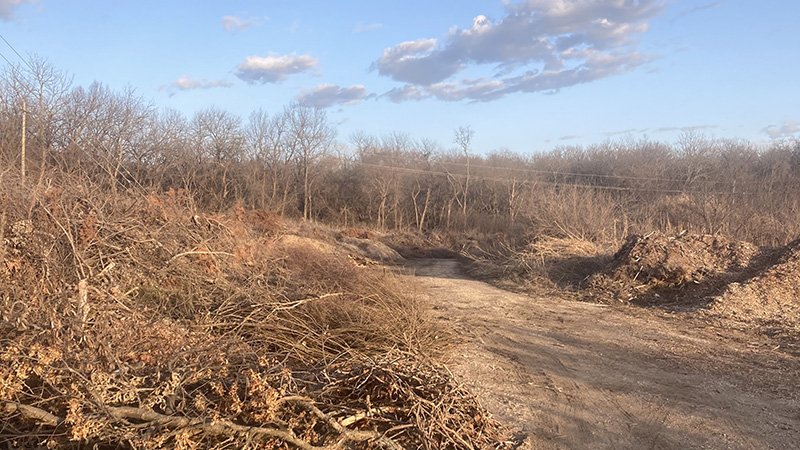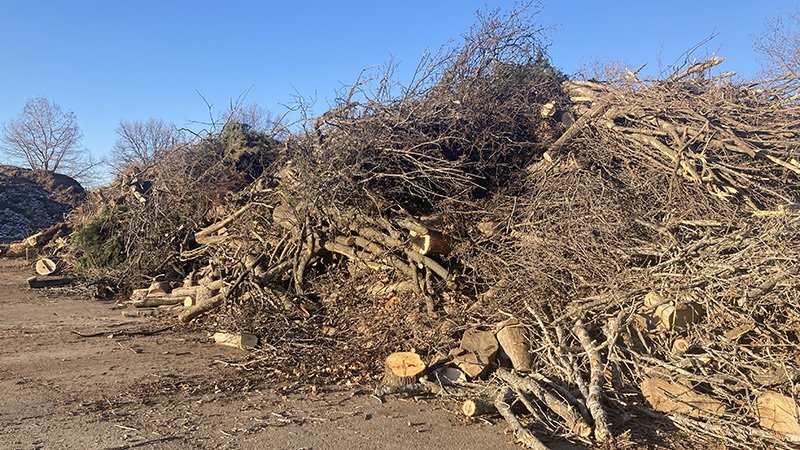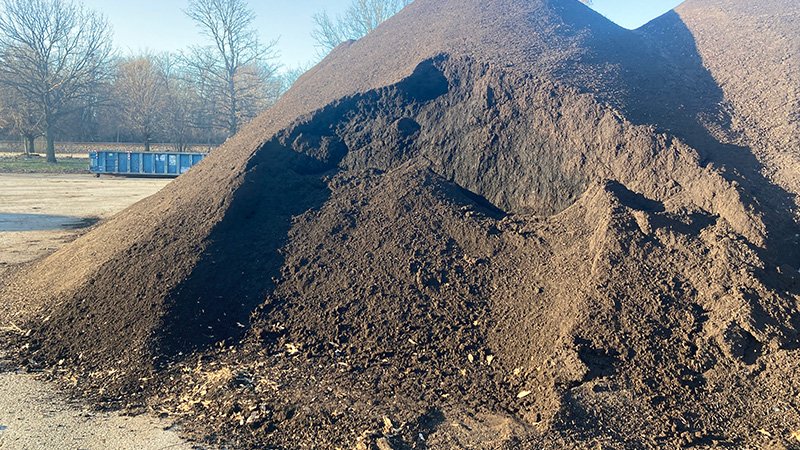Sustainable Organic Material Management
Organic matter (OM) is everywhere in the landscape. Given that OM is a key component of nutrient cycling and soil structure, it only makes sense we treat it as a valuable commodity. In any landscape OM is generated when we intervene mechanically (think mowing, pruning), when we clean the landscape (think leaf removal). OM is also utilized/handled (think mulching or soil amendment). Every time we “manage” OM we incur a cost whether financially or in ecological disruption. Added to this cost is the material bulk often associated with OM. Operations need significant physical space/machinery to handle the OM streams (both leaving campus and returning) which adds to the costs of managing/handling.
Keep organic matter where it Is
The simplest answer to OM management is to leave it where it is. For grass clippings this is relatively straight forward and widely practiced. Mowers discharge clippings where they are cut and can even be mulched with minor deck/blade adjustments. Unless you are in a situation that requires clippings be removed (putting green) recycling clippings is highly beneficial to turf grass. Fall leaf drop requires a little more consideration but even leaves can be readily mulched into a healthy turf/soil environment with no adverse effects. Of course, clumping/smothering could be an issue if mowing is not performed frequently enough, but proper management usually prevents this occurrence. Leaves in ornamental beds can be left if the customer expectations are tempered. Leaf litter provides the same functional benefits as mulch without the installation time/costs.

Treat it as an asset
A fundamental reason that OM is hard to manage is the value we place on it. If our operations (our parent organizations) understood the essential role it plays in landscape health, it would be managed better. For most organizations OM is primarily considered aesthetically. Mulch is only used to beautify the landscape rather than promote the health of the landscape. I could delve deeply into mulch, but it suffices to say that the aesthetic purpose of mulch (color, contrast, texture, application frequency) does not match the functional purpose (soil texture, nutrient cycling, weed suppression, moisture conservation, temperature moderation). Removing the existing OM that is present during leaf drop simply to replace it with double shredded hardwood? Removing excessive mulch that won’t break down in comparison to leaf litter/compost that incorporates into soil in one summer? These steps are redundant and costly in both time and manpower. Not to mention landscape health.
Status quo
Our Grounds Crew’s current OM management approach is a large open holding area where limbs, prunings, leaves, etc. are dumped in large piles. Every once in a while, (1-3 years) we have a contractor bring in heavy equipment to double grind this refuse. This is a significant cost and is directly borne by the main operational budget. The grindings range in appearance from limb chips to something approaching a commercially available double shredded hardwood mulch. It is largely litter free. It is readily available for use on campus but most usually sits in a pile, slowly decomposing. We do not turn it to hasten decomposition and create compost. As things stand, we have a huge pile of brush that is waiting to be chipped. We do not have any room left to add and the financial resources needed to grind the debris are diverted for much more pressing items on campus.

Build a better OM management stream
Fortunately, I believe we have found a better solution to our OM situation. We now process our debris through the City of Lawrence (COL) public compost operation. The COL compost facility is a full service OM refuse processing operation facility. It is located a mere 3 miles from the main campus, so is not overly burdensome in terms of travel time. This facility can handle all our waste including logs, limbs, prunings, leaves and grass clipping. The University pays an annual fee for access based on number and of vehicles and gross vehicle weight. It is a one-time cost giving us unlimited access for the year. The current fee is about 7% the cost of grinding our bulk storage pile.
I suggest that utilizing the COL Compost Facility creates a multiplier effect for KU grounds operations and sustainability efforts. First, we are saving money. The most sustainable dollar is the one not spent. In addition, the money paid for access helps subsidize the municipal efforts. If this city program flounders financially, it won’t be good for anyone. Our participation also transfers a potentially huge investment in machinery to another entity, thus sharing the cost. Lastly in terms of public relations, we demonstrate that KU is part of the larger Lawrence community and reflects our responsibility/leadership regarding sustainability. We regularly purchase the finished compost and much which are both superior to our in house products which is a significant value for us and another revenue stream defraying operational costs to City of Lawrence.

OM Is the base of the operation
Like so many of our grounds department operations, organic matter management has taken on a life of its own, divorced from its fundamental role. The natural system doesn’t waste anything, nor does it add anything. Everything is used/maximized right where it should be. Humans have disrupted this cycle at great cost to the ecosystem and our operations. But importantly, it isn’t too late to course correct. With a subtle shift in expectations, where it makes sense, organic matter can be accommodated, allowing it to fulfill its essential role to the benefit of our plants, soil, and ecosystems.

-
 1
1


0 Comments
Recommended Comments
There are no comments to display.